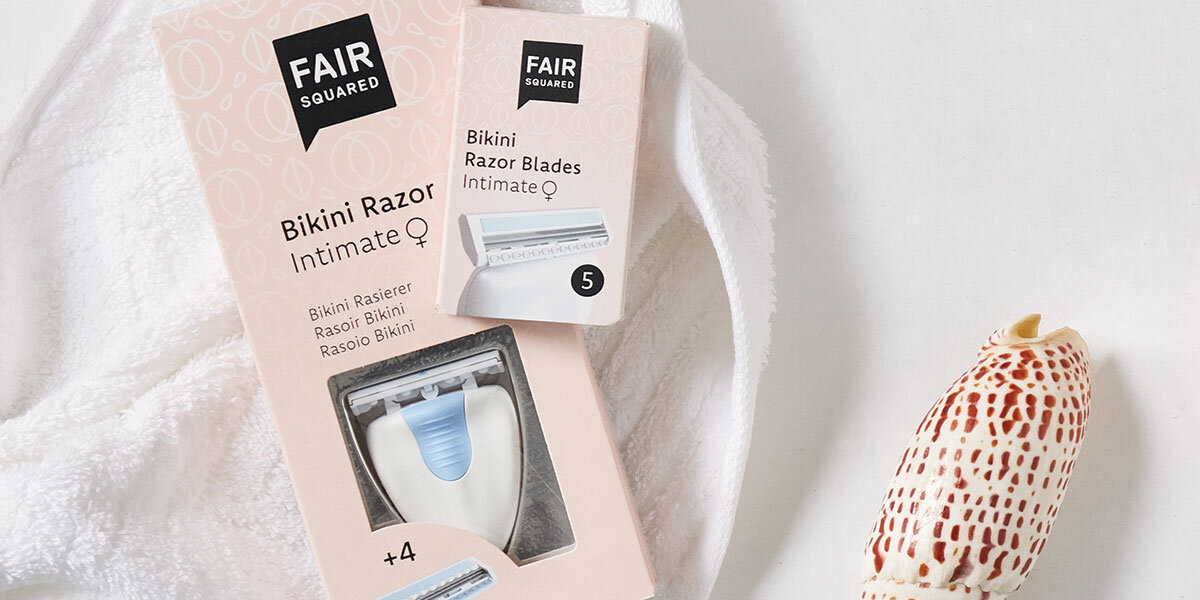How to use: Shaving
The Female Genital Area
The female genital area is one of the most sensitive areas of the female body. To protect it from germs and bacteria, it has a natural protective coat from various lactic acid bacteria. Therefore, the vaginal flora of healthy women of childbearing age with a pH of 4 to 4.5 is more acidic than that of normal skin with pH of 5.5. Care should be taken when using intimate hygiene products, so that the natural protective acid layer is not damaged. As the vaginal flora can easily be disturbed from the natural balance and cause vaginal discomfort such as: irritation, inflammation, itching, burning, discharge and uncomfortable odours. Special care should be taken especially when shaving the intimate area so as not to cause any discomfort. In this guide we will tell you what to look out for to avoid uncomfortable side effects while enjoying a smoothly shaved bikini line.
The Intimate Shave
Whether and how the genital area is shaven is a matter of personal choice. However, the fact is most women today shave entirely or part of the hair in the genital area, and preferably by a wet shave. Compared to other methods, the wet shave is quick, easy, inexpensive, not painful, and possible at any time and place. BUT most women complain of uncomfortable skin irritations like a rash, redness, and shave bumps, also known as razor burn. Hair roots/follicles, which predict the direction of growth of the new hair ignite, bend or can even be damaged completely. This prevents the glands from producing important messenger substances such as sebum, which releases fragrances and pheromones. It can also cause new hair to grow back under the skin, which can often lead to unpleasant and sometimes unhealthy intimate inflammation. But that need not be! The right products and correct technology make it possible for a carefree intimate shave without causing skin irritation and without impairment of vaginal balance.
Preparation
• Always wash your hands before cleaning/shaving your intimate area.
• Match intimate products with the pH of the vaginal Flora to clean away unwanted bacteria and germs. Warmth opens the pores, which makes skin and hair soft and allows for an easier shave. Lukewarm water is sufficient and does not attack the vaginal flora.
• Never direct the shower jet directly into the vagina because unwanted germs can get inside.
• Always wash the vaginal area from the front backwards.
• The hair should not be too long. Trim this shortly before shaving. Long hair makes shaving difficult and leads to plucking the hair instead of cutting. This can leave hair follicles inflamed or damaged and lead to other skin irritations such as itching and burning. In addition, this can also make the hair bend back into penetrate the skin. This too can be uncomfortable and cause irritation, ingrown hairs, and pimples.
Rules of Shaving
• Do not share your razor with anyone!
• Do not use the same razor blade on your private parts as for the rest of the body. Hair in the genital area grows unevenly in different directions and is usually thicker than hair on other parts of the body. As a rule of thumb, the blade closes after about 10 shaves. It is best to change the razor blade at the first sign of dullness.
• Regular shower products or shaving cream are not designed for the sensitive genital area. Refrain from products with alcohol, soap, or perfume. These dry the skin off and changes the pH in the intimate area.
Shaving
• Prepare with FAIR SQUARED Shaving Soap pH 4.5 clean the intimate area.
• Tighten the skin with your fingers when shaving.
• Press the razor open lightly and shave in small areas. Rinse with warm water in between a few shaves.
• Shave gently in the direction of genitals. Versus this makes the shave closer, but increases it risk of irritation and hair pulling. This is uncomfortable and can cause inflammation as well ingrown hairs.
• By repeatedly tearing out the hair follicles (also with epilation and waxing), which protects the hair root, this can cause damage. This allows them to bend over and the new hair grows back under the skin or becomes clogged the hair canal entirely.
Aftercare
• After shaving, rinse the shaved areas with cool water - this will soothe the skin and close the pores again.
• For follow-up treatment and skin care put some FAIR SQUARED after shave balm on the newly shaved areas, spread it with gentle circular movements and let it sink into the skin briefly.
• You should also refrain from follow-up treatment products which may contain alcohol, soap, or perfume. This will irritate and dry out the skin and can cause an effect on the pH value negatively.
• Ideally, you should shave before you go to bed. Ensure not to wear tight-fitting underwear and clothes so that the skin can breathe better and recover.
• Clean the spaces between the razor blades thoroughly with running warm water so that there are no more residues in between. Let the razor air dry and keep this until your next shave in a hygienic place.

